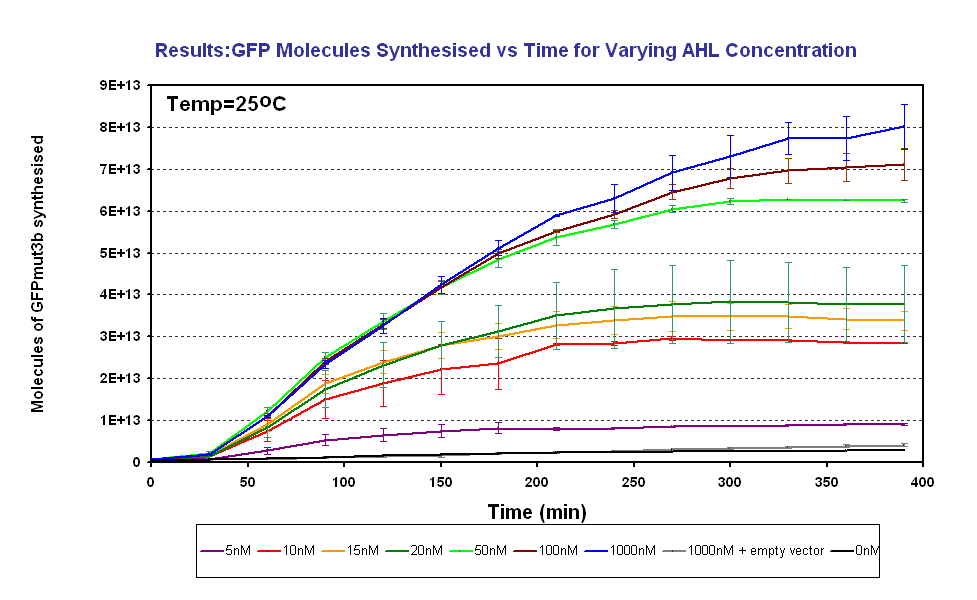Imperial/Infector Detector/Testing
From 2007.igem.org
(Difference between revisions)
m (→Results) |
m (→Results) |
||
| Line 27: | Line 27: | ||
=Results= | =Results= | ||
{|align="center" | {|align="center" | ||
| - | |<center>[[Image:GFPMolecule syn ID2 Final.PNG|frame| | + | |<center>[[Image:GFPMolecule syn ID2 Final.PNG|frame|100px|Click for full results and protocols can be found on the links [[Imperial/Wet Lab/Results/ID3.1| results]] and [[Imperial/Wet_Lab/Protocols/ID3.1|protocol]] pages. |
]]</center> | ]]</center> | ||
|- | |- | ||
Revision as of 01:23, 26 October 2007

Infector Detector: Testing
Aims of Testing
To test and characterise the key characteristics of our system such as the sensitivity of the system to AHL. To do this, we induce the system with known concentrations of AHL input and measure the fluorescence output. Then using a calibration curve the fluorescence was converted into the number of GFPmut3b molecules synthesised, click on the following link for an explaination about how to use calibration curve use the calibration curve].
Results
The results show us the following:
|
